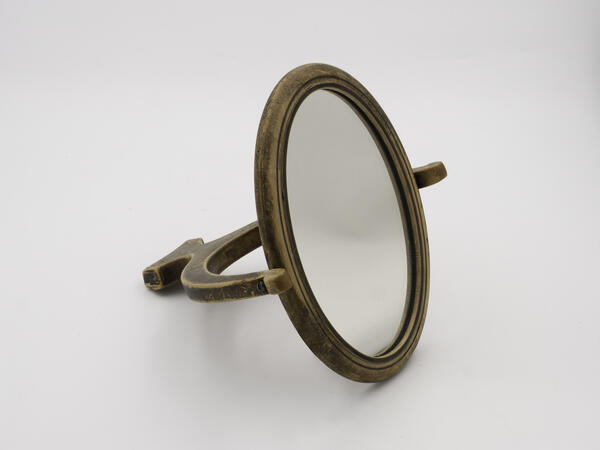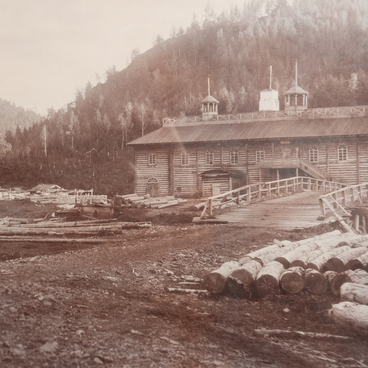The majority of residents of the Yenisei province were orthodox. However, the people preserved traditional rituals rooted in the pagan past. One of these traditions was fortune-telling. People wanted to know their future, so, despite the negative attitude of the church to such rites, the clergy failed to eradicate the tradition of learning the future with the help of mystical powers.
Young girls usually read the fortune for their betrothed. This had to be done on certain days, and one had to strictly follow the established rules. For example, fortune-telling often took place during the Yuletide period, which began on Christmas Eve, that is, on December 24, according to the old style, and lasted until Epiphany — on January 6. Besides, our ancestors told fortune on Butter Week, on Whit Monday, on St. John Baptist’s day. One of the main topics of fortune-telling for girls was marriage.
Various objects and devices, such as a mirror, were used for divination. In addition to the mirror, the fortune-telling kit presented in the museum has candlesticks, a plate, and a ring. With the help of these objects, it was possible to tell fortune in different ways. In the mirror, the girl tried to see the image of the future groom. Staying alone in the evening, after bathhouse, she would light candles on the sides of the mirror and sit down opposite it.
Sometimes two mirrors were used in this divination: the girl put them opposite each other and sat between them. Trying not to blink, she peered into the mirror, saying: ‘The betrothed and beloved, come to look in the mirror, show yourself, and look at me.’ Or even shorter: ‘Appear to me, my betrothed and beloved! ’ It was believed that at the moment when the silhouette of the betrothed appeared in the mirror, it was necessary to shout: ‘Keep away from me! ’.
If a girl wanted to find out the name of her betrothed, then a new object appeared during the fortune-telling. She would sit in front of the mirror and put a cup of water in front of her. Scraps of paper with men’s names were put around the circle of the cup. A thread was tied to the ring. Holding the thread by one end, the girl lowered the ring into the cup and slowly moved it over the names, waiting for the pendulum to start swinging or spinning.
In addition to the mirror, other fortune-telling objects were also used: spinning wheels and spindles, handkerchiefs, various kinds of flowers, and herbs that were woven into a crown. Many of the divinations have survived to this day. Modern girls resort to fortune-telling to find out their fate or the name of the future significant one. However, today divination no longer has that halo of mystery and mysticism, as before. It has become part of a custom, and sometimes a funny ritual or a pleasant pastime.
Young girls usually read the fortune for their betrothed. This had to be done on certain days, and one had to strictly follow the established rules. For example, fortune-telling often took place during the Yuletide period, which began on Christmas Eve, that is, on December 24, according to the old style, and lasted until Epiphany — on January 6. Besides, our ancestors told fortune on Butter Week, on Whit Monday, on St. John Baptist’s day. One of the main topics of fortune-telling for girls was marriage.
Various objects and devices, such as a mirror, were used for divination. In addition to the mirror, the fortune-telling kit presented in the museum has candlesticks, a plate, and a ring. With the help of these objects, it was possible to tell fortune in different ways. In the mirror, the girl tried to see the image of the future groom. Staying alone in the evening, after bathhouse, she would light candles on the sides of the mirror and sit down opposite it.
Sometimes two mirrors were used in this divination: the girl put them opposite each other and sat between them. Trying not to blink, she peered into the mirror, saying: ‘The betrothed and beloved, come to look in the mirror, show yourself, and look at me.’ Or even shorter: ‘Appear to me, my betrothed and beloved! ’ It was believed that at the moment when the silhouette of the betrothed appeared in the mirror, it was necessary to shout: ‘Keep away from me! ’.
If a girl wanted to find out the name of her betrothed, then a new object appeared during the fortune-telling. She would sit in front of the mirror and put a cup of water in front of her. Scraps of paper with men’s names were put around the circle of the cup. A thread was tied to the ring. Holding the thread by one end, the girl lowered the ring into the cup and slowly moved it over the names, waiting for the pendulum to start swinging or spinning.
In addition to the mirror, other fortune-telling objects were also used: spinning wheels and spindles, handkerchiefs, various kinds of flowers, and herbs that were woven into a crown. Many of the divinations have survived to this day. Modern girls resort to fortune-telling to find out their fate or the name of the future significant one. However, today divination no longer has that halo of mystery and mysticism, as before. It has become part of a custom, and sometimes a funny ritual or a pleasant pastime.



